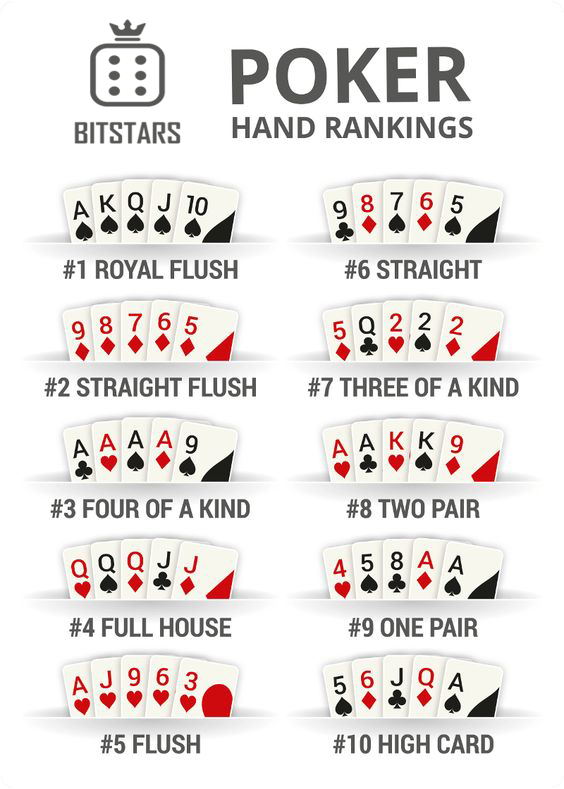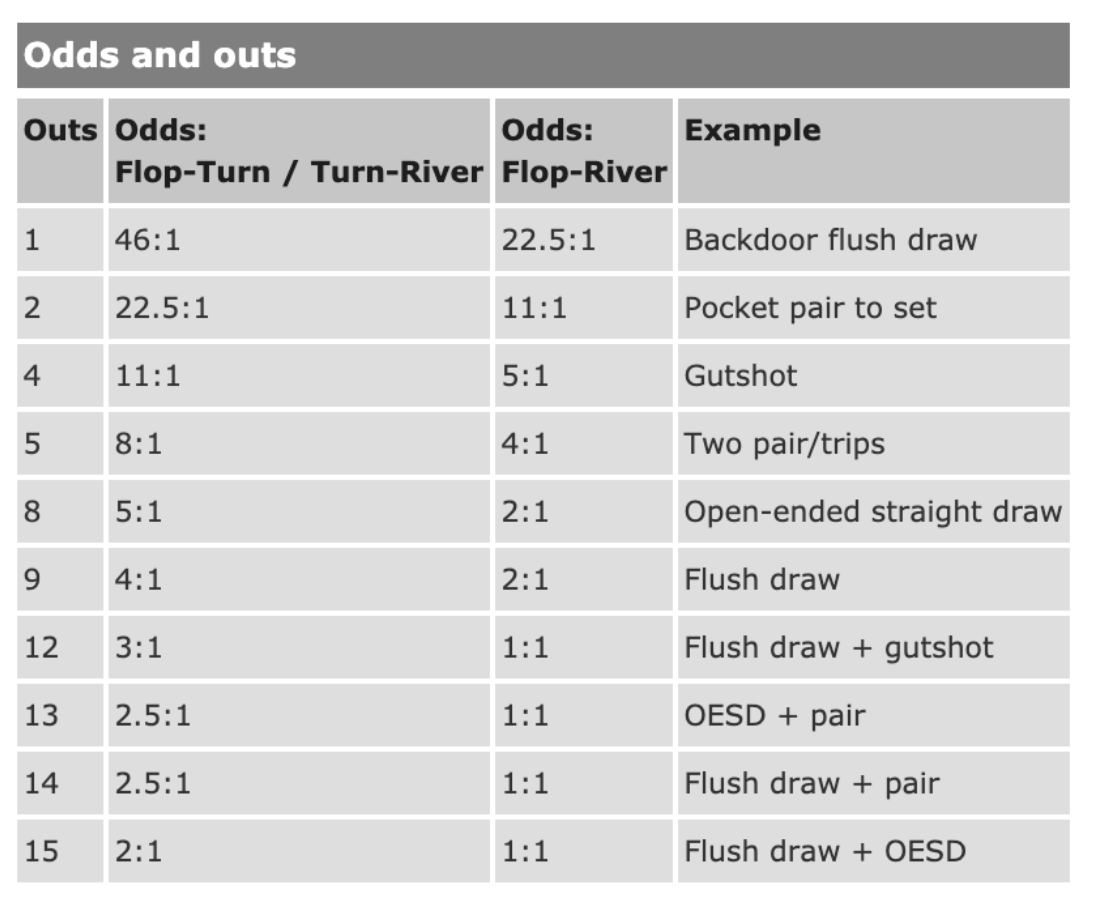Poker Probability Chart
Common Poker Hands Odds. Open-ended straight draws (4.8:1) An open-ended straight draw (OESD) is a straight draw that can be completed at either end. For example, holding 6. Four to a flush (4.1:1) Inside straight (10.5:1) One pair to two pair or trips (8.2:1) Overcards (6.7:1). The game is over when a single player has won all the money at the table. Although poker contains elements of randomness and gambling, there is a substantial amount of skill involved in understanding probability and game theory. Poker strategy typically involves an application of these concepts to improve one's chance of winning. Other poker odds charts. For more useful odds charts that you can use for when you are working out whether or not to call when on a drawing hand, use the following tables: Ratio odds chart. Percentage odds chart. Both of these tables give the odds for completing your draw depending on.
The poker hand probability chart shows the odds of making a specific hand type by the showdown. It is valid for any 7-card poker variant, including Texas Holdem and 7 Card Stud.
The chart assumes that you have a random hole cards. Some hole cards (for example pocket pairs), are more likely to make a good hand by the river. This is why playing tight is such important in poker.
The cumulative odds column displays odds to make a particular hand or better. For example, the probability for making four of a kind or straight flush or royal flush is 0.0311%.
The total number of unique 7-card hands is 133,784,560. Suits have no relative value in poker, so by ignoring them the total number ot unique 7-card hands drops to 6,009,159.


Since in poker you can use only 5 cards out of 7 to make the best hand, there is a further reduction in possible combinations, making the total of 4,824 unique poker hands.
An interesting fact is that you are more likely to make a pair than a high card by the showdown in 7-card variants. This is a bit against the poker hand ranking, which was originally built with the assumption that the less frequent hand beats the more frequent one.
The ranking was correct for 5-card poker variants, which were dominant at the times the ranking was created. Maybe people that invented 7-card variants forgot to update the ranking, who knows?
Poker hand probability chart
| Hand | Odds | Cumulative |
| Royal flush | 0.0032% | 0.0032% |
| Straight flush | 0.0279% | 0.0311% |
| Four of a kind | 0.168% | 0.199% |
| Full house | 2.60% | 2.80% |
| Flush | 3.03% | 5.82% |
| Straight | 4.62% | 10.4% |
| Three of a kind | 4.83% | 15.3% |
| Two pair | 23.5% | 38.8% |
| One pair | 43.8% | 82.6% |
| High card | 17.4% | 100% |
More articles on poker probability:
Poker odds calculator
Poker outs and odds
Pot odds and expected value
Sklansky bucks
Implied odds
Reverse implied odds
Common preflop odds chart
Common flop odds chart
Pocket pairs - flopping overcards odds
Go back to the Online Poker Strategy.
All of our poker charts will load as PDF files. This means you need to have Adobe Acrobat Reader, which is free software that’s normally installed on most computers. If you don’t have it installed then you can download it for free from Adobe.
The following charts will open in a new window and might take a few seconds to load, so please be patient.
A list of the standard poker hand rankings, from best to worst. It can be printed off and used as a handy reference for beginners who are just starting out.
This chart includes various probabilities and odds for many of the common events in Texas hold 'em. Committing these probabilities to memory can only be beneficial.
This chart lists the mathematical odds of hitting your outs from the flop to turn / turn to river / flop to river and can be used as a handy reference when calculating pot odds.
Poker Hands Probability Chart
A starting hand chart for standard full ring no-limit hold'em games with 9 or 10 players. To be used as a general guide. Game conditions must always be taken into account.
Texas Holdem Poker Odds Chart
A beginners guide to starting hand selection in limit hold'em full ring games with 9 or 10 players. Game conditions must always be taken into account.